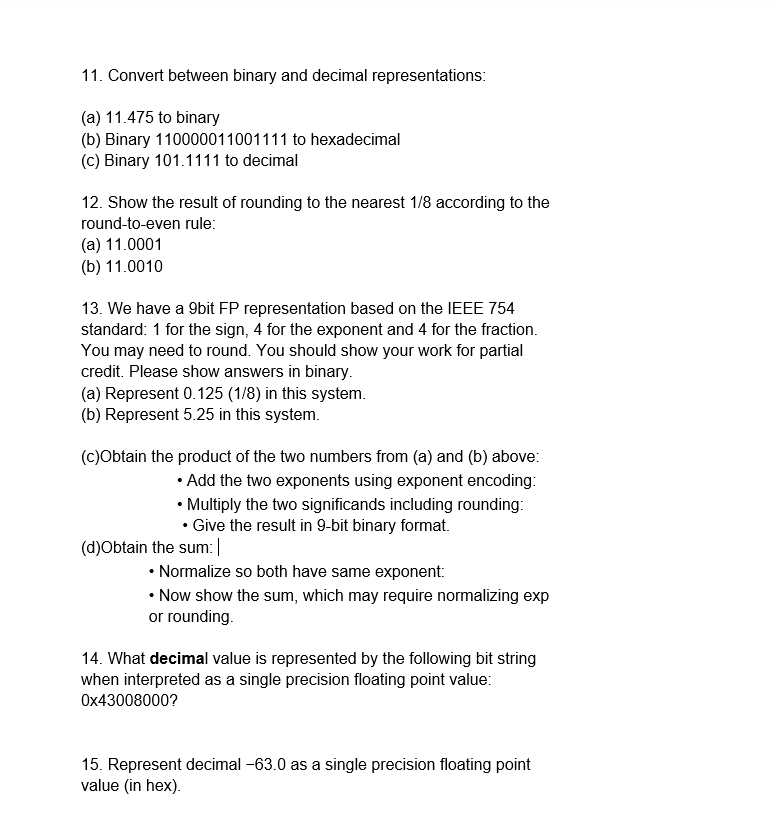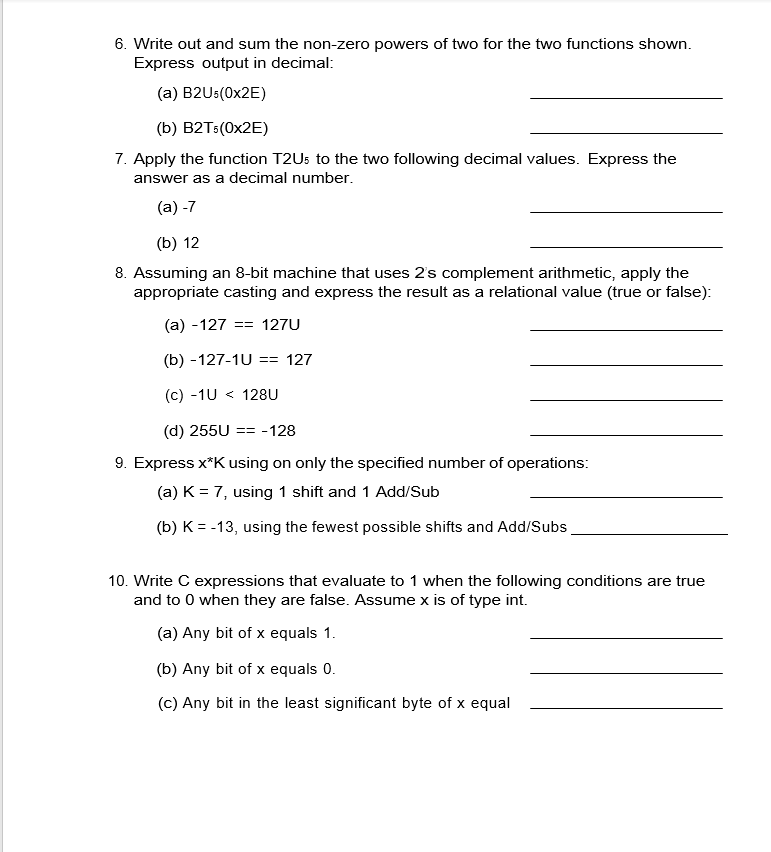Home /
Expert Answers /
Computer Science /
11-convert-between-binary-and-decimal-representations-a-11-475-to-binary-b-binary-1100000110-pa687
(Solved): 11. Convert between binary and decimal representations: (a) 11.475 to binary (b) Binary 1100000110 ...
11. Convert between binary and decimal representations: (a) to binary (b) Binary 110000011001111 to hexadecimal (c) Binary to decimal 12. Show the result of rounding to the nearest according to the round-to-even rule: (a) (b) 13. We have a 9bit FP representation based on the IEEE 754 standard: 1 for the sign, 4 for the exponent and 4 for the fraction. You may need to round. You should show your work for partial credit. Please show answers in binary. (a) Represent in this system. (b) Represent in this system. (c)Obtain the product of the two numbers from (a) and (b) above: - Add the two exponents using exponent encoding: - Multiply the two significands including rounding: - Give the result in 9-bit binary format. (d)Obtain the sum: - Normalize so both have same exponent: - Now show the sum, which may require normalizing exp or rounding. 14. What decimal value is represented by the following bit string when interpreted as a single precision floating point value: 0x43008000? 15. Represent decimal as a single precision floating point value (in hex).
6. Write out and sum the non-zero powers of two for the two functions shown. Express output in decimal: (a) (b) 7. Apply the function to the two following decimal values. Express the answer as a decimal number. (a) (b) 12 8. Assuming an 8-bit machine that uses 2 's complement arithmetic, apply the appropriate casting and express the result as a relational value (true or false): (a) (b) (c) (d) 9. Express using on only the specified number of operations: (a) , using 1 shift and Sub (b) , using the fewest possible shifts and Add/Subs 10. Write expressions that evaluate to 1 when the following conditions are true and to 0 when they are false. Assume is of type int. (a) Any bit of equals 1 . (b) Any bit of equals 0 . (c) Any bit in the least significant byte of equal
Expert Answer
Question no. 11Explanation:(a) 11.475 to binary:To convert the decimal number 11.475 to binary, we need to first convert the integer part (11) and the

